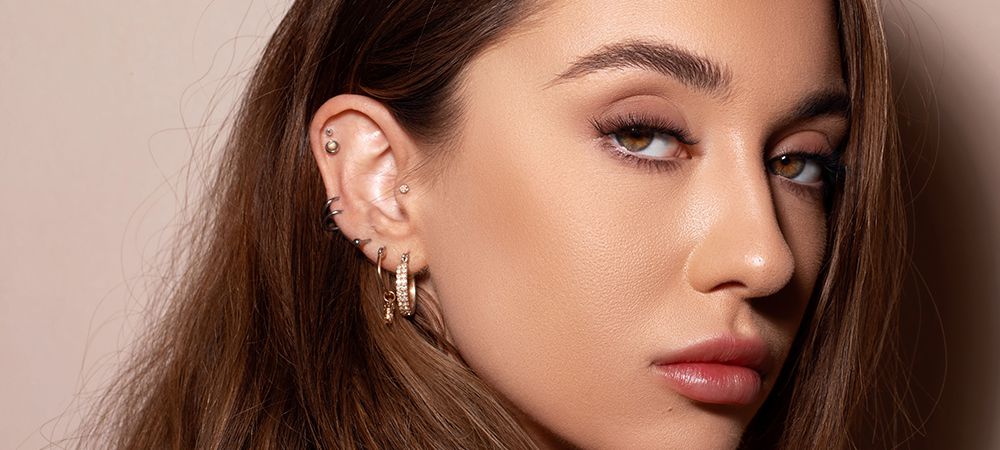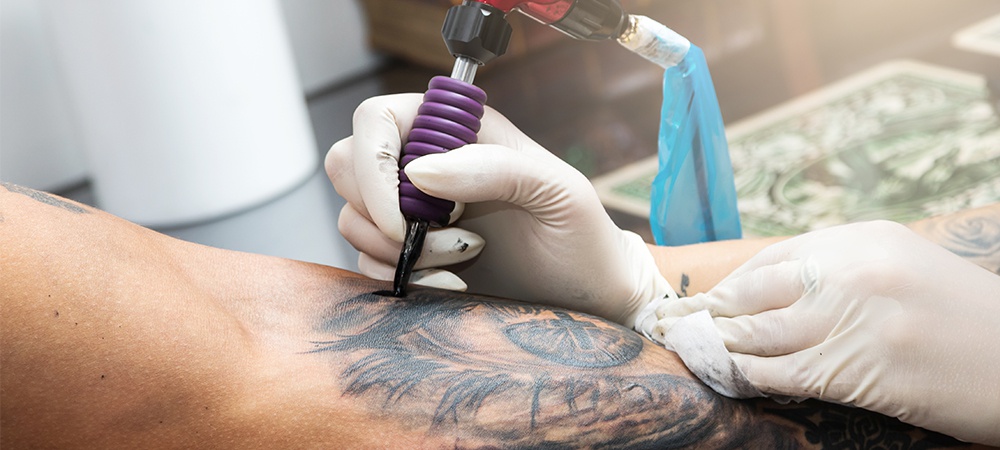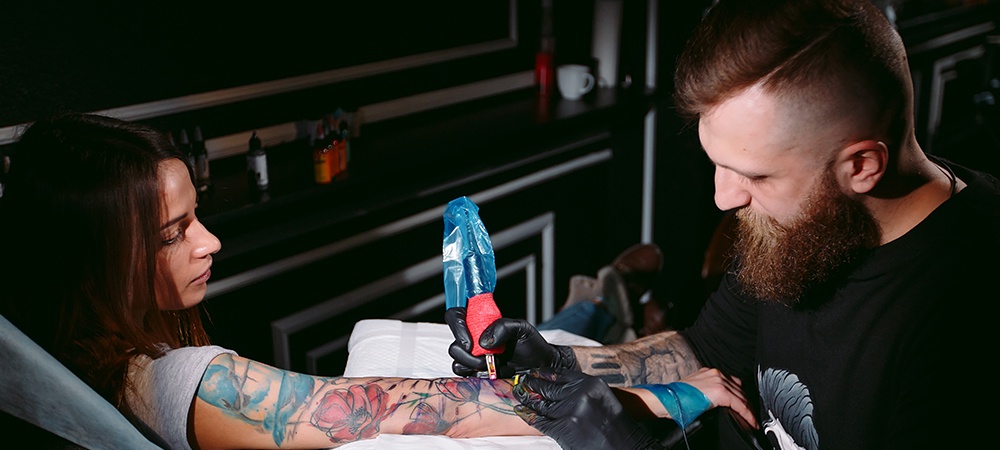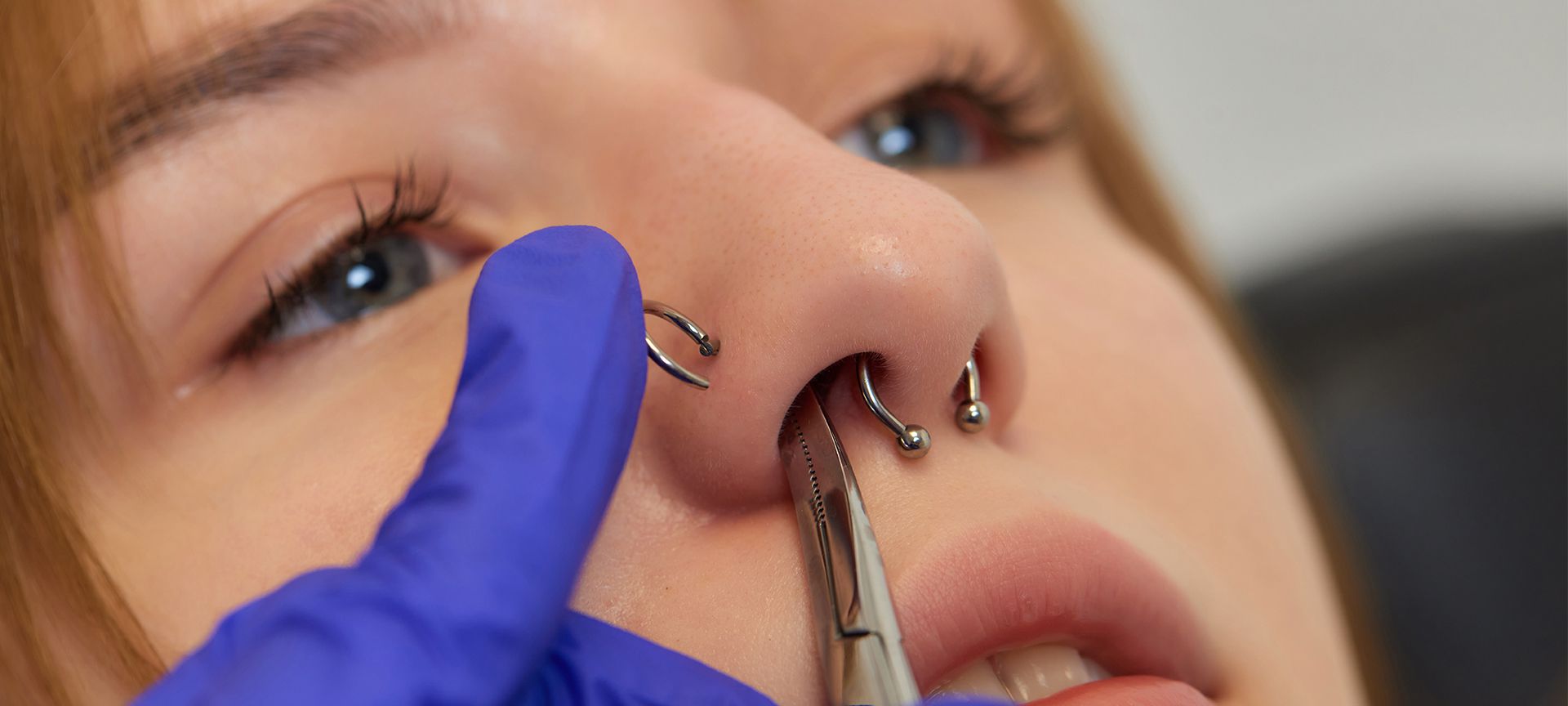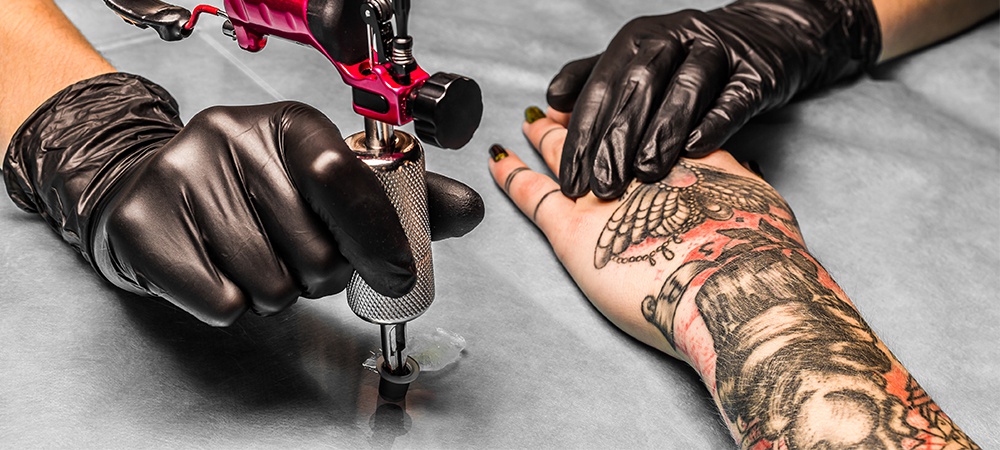Pain vs. Pleasure: Debunking Common Myths about Tattoos and Piercings
Getting a new tattoo or piercing can be a refreshing experience, transcending beauty, personal improvement and self-actualization. The only problem is the worry about pain, thanks to myths and misconceptions that you hear in passing or see on television and social media.
You’re standing at the crossroads of creativity and self-expression, contemplating a new tattoo or piercing, but the cloud of misinformation about pain and pleasure looms overhead. We get it; the fear of the unknown can be daunting.
This article will break down and debunk 7 common myths about tattoos and piercings. The information comes from years of hands-on experience drawing tattoos right here in Toronto. From intricate tattoo designs to goofy spur-of-the-moment ink, we’ve done it, and all we know what it feels like from talking to our customers.
Here’s the truth you seek about the pain vs pleasure conversation before diving into that ink or needle.
Myth 1: Tattoos are Really Painful
Tales of agony from vocal individuals may have led to the perception that tattoos are overwhelmingly painful, amplified by media portrayals.
Media dramatization, sensationalized portrayals in movies and exaggerated reactions from people you know have contributed to the myth that the tattooing process is unbearably painful.
In reality, tattoo pain is subjective and varies depending on your pain tolerance, the location of the tattoo, and the complexity and duration of the session. While some areas are more sensitive, such as bones or areas with less flesh, most customers at our tattoo studio in Toronto describe the tattoo sensation as more discomfort than unbearable pain.
They often liken tattoos to a constant scratching or vibrating sensation, which becomes more tolerable as the process progresses. In addition, your body naturally releases endorphins during the process, which act as natural painkillers, easing discomfort.
The following recommendations can help you manage or reduce pain while getting a tattoo.
- Select a design and placement that aligns with your pain tolerance. Less sensitive areas like the upper arm, calf, or outer shoulder tend to be less painful than bony or more sensitive areas.
- Prioritize a good night’s sleep and a nutritious meal before your appointment. This helps your body cope with stress and discomfort better.
- Drink plenty of water before the session to keep your skin hydrated, which aids in reducing discomfort.
- Engage in relaxation techniques such as deep breathing, meditation, or listening to music during the session to ease nerves and reduce stress, thus managing discomfort better.
- Over-the-counter numbing creams might help to a certain extent, but consult with your tattoo artist and follow their recommendations for use during the session.
Myth 2: Pain and Pleasure Don’t Mix
The idea that pain is inevitable and pleasure is unattainable during a tattoo or piercing session is a prevalent misunderstanding. This misconception that pain and pleasure are mutually exclusive during tattoo sessions arises from the general assumption that pain negates any possibility of enjoyment
Amidst the mild discomfort, many people find pleasure in the therapeutic process, enjoying the symbolism, the artistry, and the anticipation of the end result. While some discomfort is inherent, the experience isn’t solely about enduring pain.
- The therapeutic aspects of getting a tattoo are often overlooked. The artistry, self-expression, and creative collaboration between you and your tattoo artist can create a deeply fulfilling experience.
- Alongside, you may find the rhythmic, repetitive nature of the tattoo process calming and therapeutic. It can offer a form of meditation, helping you de-stress and unwind.
- The result and the pleasure it brings break down this common tattooing myth. Anticipating the final outcome of a tattoo can create a sense of excitement and anticipation, enhancing the overall experience.
- Completing a tattoo session brings a sense of achievement. This emotional reward can overshadow the temporary discomfort.
Related Article: Walk-In Tattoo In Toronto: Can I Get One And What Do I Need To Know?
Myth 3: Piercings Are More Painful Than Tattoos
Piercing stigmas often stem from misconceptions about needle penetration. The thought of using a needle to create a hole in the body is scary if you don’t know how it works. This has fostered this common myth about piercings and tattoos.
In reality, safe piercings are no more painful than tattoos. Pain levels for piercings are usually short-lived and relatively less intense compared to the extended duration of a tattoo session.
Quick and sharp, piercings may cause a pinch but quickly subside. If you’re especially worried, follow these best practices for ensuring a piercing session is as painless as possible:
- Choose a skilled and reputable piercer.
- Opt for less sensitive body areas for the piercing.
- Stay hydrated and nourished before the session.
- Communicate openly with the piercer about concerns or anxieties.
- Ensure the area is clean and properly sanitized.
- Follow aftercare instructions for your piercing diligently.
- Consider taking over-the-counter pain relief, if recommended by the piercer.
- Use distractions like music or deep conversations during the piercing.
- Stay calm and focus on the positive outcome.
Myth 4: Tattoo and Piercing Pain Lasts Forever
The discomfort during the healing period for tattoos and piercings is generally manageable. Pain and soreness gradually decrease as your body heals, and proper aftercare significantly contributes to reducing discomfort and promoting a smooth healing process.
The perception that tattoo and piercing pain lasts forever is a myth, as the healing period pain is temporary and part of the body’s natural recovery process.
Tattoo pain is temporary and typically subsides once the session concludes. After getting a tattoo, the healing process begins, and pain during this phase varies. Initial soreness and tenderness in the tattooed area are common for a few days.
Your skin may feel sensitive or itchy during the healing process, which usually takes about two to three weeks. Complete healing, where the tattoo is settled and the pain is minimal, can take several months.
Piercings involve a brief moment of discomfort during the procedure, followed by soreness and mild pain in the area for a few days. The initial healing phase can take anywhere from a few weeks to a few months, depending on the type of piercing.
During this time, tenderness, redness, and some discomfort are typical. Complete healing for most piercings usually takes about six months to a year.
Myth 5: Bigger Tattoos Equal More Pain
Assumptions that the size of the tattoo directly correlates with increased pain come from the extended duration of the session. The general consensus is that you’ll spend longer in the tattoo chair. It, therefore, stands to reason that every second spent in that chair will be painful.
That’s not necessarily the case. Yes, larger tattoos will take more time to complete. But it doesn’t equal more pain. While larger pieces take more time, the pain is not necessarily amplified. The body adjusts, and endorphins kick in during longer sessions, making it more manageable.
Myth 6: Alcohol or Painkillers Eliminate Pain From Tattoos and Piercings
Most people would have you believe that alcohol and painkillers can effectively nullify the pain of tattoos and piercings.
Consuming alcohol or painkillers before a tattoo or piercing session is not recommended and can pose potential risks. Alcohol can act as a blood thinner, increasing bleeding during the procedure, which can interfere with the ink’s application or affect the precision of your tattoo piercing.
Additionally, it may cloud judgment, making decisions about the tattoo or piercing less clear. Painkillers may have adverse effects or interactions with the body during the session, impacting the healing process and your body’s response to the pain.
Rather than eliminating pain, both alcohol and painkillers can hinder the effectiveness of the process, compromise the final outcome, and even increase the risks of the procedure.
It’s advisable to approach a tattoo or piercing session with a clear mind and body, without the influence of substances that may impact your body’s reactions or the artist’s precision.
Related Article: The Tattoo Process: What To Expect During Your Appointment
There’s the Truth About Tattoos and Piercings
There you have it, a meticulous breakdown of the truth surrounding common myths about the pain vs pleasure side of tattoos and piercings. Enjoy the ride, and embrace the beauty of your new ink or piercing with the knowledge that the truth has set you free.
It starts with an appointment with our in-house tattoo artists and piercers at Piranha Tattoo Studio. We’ll walk you through all you need to know about the potential discomfort to expect from your tattoo or piercing sessions and how best to prevent them. Call +1 905 605 9191 to book an appointment with us!

